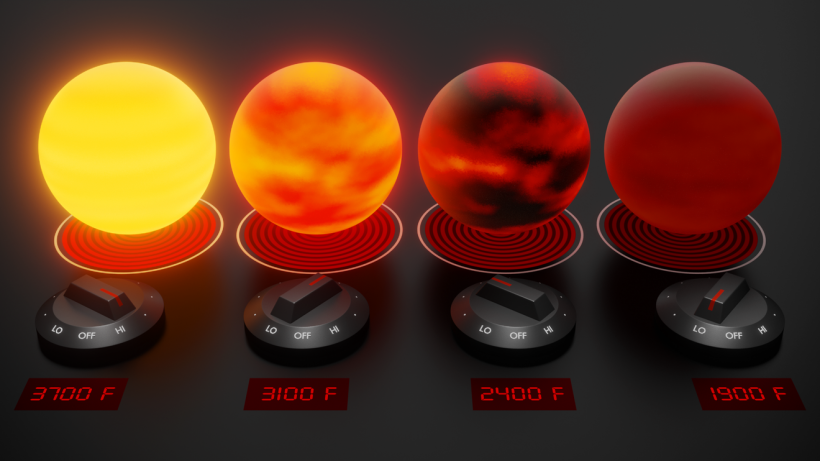The clouds that cover our skies are made up of water vapor. On other planets, these suspended atmospheric materials are also present, but they are made up of other elements that are not similar to Earth's.
Clouds Formation in Planets

Silicate clouds may be visible in brown dwarf atmospheres, but only when the brown dwarf is cooler than about 3,100 degrees Fahrenheit (about 1,700 degrees Celsius) and warmer than 1,900 F (1,000 C). Too hot, and the clouds vaporize; too cold, and they turn into rain or sink lower in the atmosphere.
Extraterrestrial clouds have compositions that might vary depending on the properties of a planet. They could be formed not just with water but with other available chemicals. These compounds include ammonia, ammonium hydrosulfide, and even silicates (sand), found in nearly 90 percent of Earth's crust.
In a new research from NASA, scientists revealed how clouds form on other planets. The study collected every aspect that serves as the foundation of extraterrestrial clouds in distant worlds. The setup varies per planet; depending on their temperature and chemical composition, a unique type of cloud will form.
The findings were made possible through the help of data collected by the now-defunct Spitzer Space Telescope. The experts focused on the data that the instrument gathered from its previous observations of brown dwarfs - cosmic materials that are somewhat of a bridge between the stars and planets.
University of Western Ontario's Department of Physics and Astronomy specialist Stanimir Metchev, who also served as co-author of the study, explained that understanding more about the silicate-filled atmospheric regions in brown dwarfs and other exoplanets could help us learn more about what makes an appearance of these cosmic bodies from an outer perspective, especially those that have temperature and size close to Earth's.
Despite materializing with various chemical materials, the process of cloud formation is the same on every other planet. The contents of the cloud are heated to a certain level of temperature up until to the point where it becomes a vapor. Once suspended in the atmosphere, it will be cooled by the planet's natural climate and undergo condensation.
On worlds beyond our solar system, clouds of superhot sand drift through strange skies—and NASA telescopes are studying what makes them possible: https://t.co/esnrAMjQ2k pic.twitter.com/o5A2ABalTU
— NASA (@NASA) July 7, 2022
ALSO READ: NASA Fears China Taking Over Moon: What Did International Space Law Say About This Matter?
Silicate Clouds
Almost any elements would form clouds, including ammonia, salt, and sulfur. As for silicate, the planet should have enough heat to develop clouds, as rocks are known to vaporize through an extreme temperature only. This condition makes brown dwarfs the perfect place for the unique silicate-based clouds to exist.
The experts consolidated 100 marginal detections from the cosmic bodies observed by the Spitzer Space Telescope and grouped them according to their temperatures. Interesting Engineering reports that most of the worlds with silicate clouds have intense heat ranging from approximately 1,000 degrees Celsius to 1,700 degrees Celsius.
Co-author Genero Suárez explained that they examined the Spitzer data to identify the brown dwarfs with the presence of silicate clouds and, at first, did not have any idea about what they would find.
The team concluded that, among the planets, a certain temperature must be met to form clouds from any chemical elements. The hotter the planet's conditions are, the more likely it is that it is covered with silicate-based clouds. On the other hand, a colder climate results in a cloud that quickly transitions to rain or sinks to lower altitudes of the atmosphere.
The study was published in the Monthly Notices of the Royal Astronomical Society, titled "Ultracool dwarfs observed with the Spitzer infrared spectrograph - II. Emergence and sedimentation of silicate clouds in L dwarfs, and analysis of the full M5-T9 field dwarf spectroscopic sample."
RELATED ARTICLE: President Joe Biden to Unveil NASA James Webb Space Telescope's First 5 Photos of the Universe
Check out more news and information on Space in Science Times.














